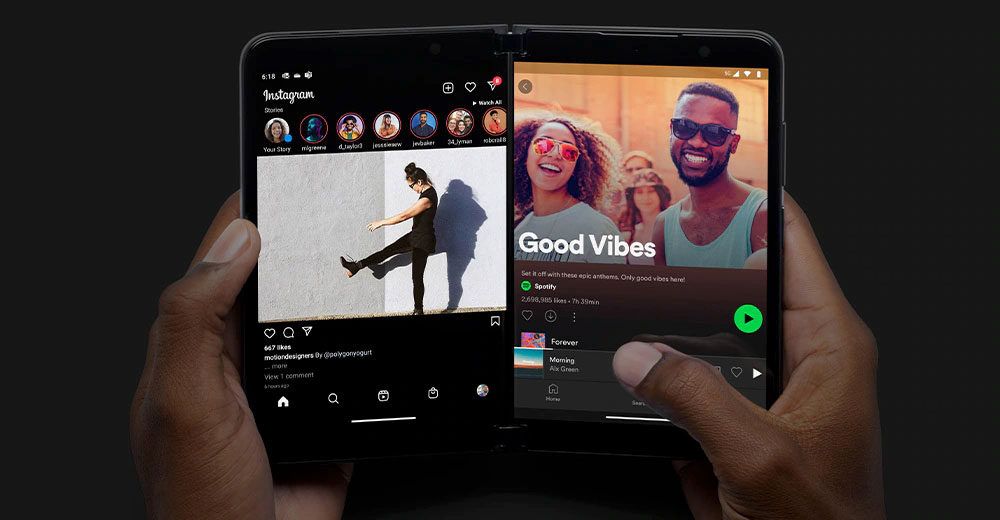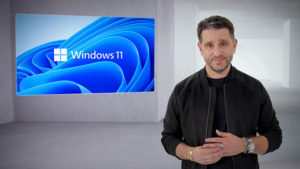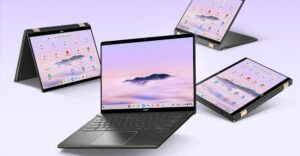Microsoft last week launched its new Surface line, and elements of it better target Apple’s weaknesses than any prior effort.
I’ve been covering Windows releases since 1994, when I first started as an analyst and was tied to the Windows 95 launch. Every release has those that get over-excited and those that get overly concerned.
Fortunately, the days of Windows disasters are behind us, and we can look at Windows ME, Vista, and Windows 8 as experiences that will remain in the past.
Of those three, the only version I had personal issues with was ME, and it was indeed a train wreck. In a way, Windows 95 was a train wreck also; not so much the product, which wasn’t bad for its time, but because Microsoft hadn’t yet fully understood it needed to manage the entire ecosystem (like drivers, security, and hardware), not just the OS.
Let’s talk about the new Surface PC product that best showcases how Microsoft can compete with Apple.
We’ll close with my product of the week, the Surface Duo 2, which has become a viable alternative to the iPhone lead in smartphones, a lead that is ending thanks to foldable and flexible screens — and Apple’s stubbornness.
Birth of Surface
The Surface line was created because then CEO Steve Ballmer hadn’t yet grasped what made the Zune fail and still thought the right path was a Windows iPad clone coupled with Windows Stores located next to Apple Stores.
This strategy might have worked had Microsoft invested in the same level of marketing that launched Windows 95. But Ballmer’s underfunded marketing and the efforts — both the Stores and the Surface products — failed initially in their goal to displace Apple.
Ballmer wasn’t alone. This mistake is a recurring problem with CEOs who don’t get the power of a brand. There is also the issue of a moving target; it takes time to create the copy, and during that time, the item you are copying advances. So, something that initially looks competitive often isn’t by the time it is released.
Microsoft’s first product that tried to take market share from Apple’s iPad target was the Surface Book. However, while it was an engineering marvel, it also represented an ugly tradeoff and still had Apple-focused elements.
The Surface Laptop Studio is replacing the Surface Book. It is the closest to a genuinely Windows-optimized product so far — with little connection to Apple other than targeting the same creative audience, which is how you should create a competing offering.
Creating a Competing Product
As I noted above, a common mistake is to clone another vendor’s product you want to displace.
Zune was created to be a better iPod, BlackBerry, and Palm tried to create a better iPhone, GM and Ford tried to create better Toyotas with the Pinto and Vega, and even Apple screwed up with their first phone, the ROKR E1.
Pepsi does compete well with Coke, but the marketing expense is massive, and Pepsi still generally lags in market share. However, you can build a business this way; 7UP carved out its own space and forced Coke to copy with Sprite.
The mistake companies make is to focus on the product and not the customer.
Toyota didn’t beat GM and Ford when it built GM and Ford knock-offs; Toyota beat Ford when it did a better job of building what the customer wanted and then marketing that benefit effectively at scale. The successful strategy wasn’t trying to be a better Ford or GM but to deliver a better product from the customer’s perspective and then funding marketing so that prospective buyers understood this advantage.
Tesla’s success strategy was similar. However, unlike Toyota, it never copied anyone and moved directly to a well-differentiated product and drove interest through advocacy. Tesla’s very low marketing spending was offset by one of the most significant advocacy efforts I’ve ever seen. It is far harder to pull off the latter. On top of that, Tesla benefitted greatly by being the only electric car company of scale when other vendors were not meeting the needs for global warming mitigation and alternatives to gas-powered vehicles.
The wisest competitive path is to find a significant unmet need and address it rather than creating a clone. It is ironic that at both Microsoft and Palm, groups wanted to create an iPhone-like offering before Apple but were overruled by the top executives in both companies who couldn’t see beyond their existing efforts. Those execs didn’t see the unmet need.
It’s interesting to note that Steve Jobs saw the risk to the iPod that such a phone would represent and created it first to prevent competitive displacement. This strategic tactic is referred to as “eating your children” (not my favorite term), where you realize that a market change is coming and that you should pivot first to avoid a competitor taking your customers.
Surface Book to Surface Laptop Studio
The Surface Book and the later Surface Duo both broke from the Apple targeted mold and attempted to create alternatives that addressed unmet needs in the Apple user base. Yet both had initial teething problems. The Surface Book’s tablet mode had impoverished battery life and limited performance; the Duo had a poor camera, a downlevel processor, and several software issues. Both were engineering wonders, but they were also self-defeating.
Now, the new Duo 2 addresses virtually all of the shortcomings of the initial Duo, making it a far more worthy alternative using the top-of-the-line Qualcomm Snapdragon 888, a far better camera solution and having a black color option while maintaining the same dual-screen configuration.
But the Surface Laptop Studio goes even further by creating what is closer to a no-compromise flexible solution for creators that showcases Windows 11:
- It has the power, with Intel and Nvidia technology, to provide the performance creators want;
- the screen is cantilevered, which means it works better for entertainment on planes;
- it works better with Microsoft’s improved pen for those working on a variety of creative projects;
- it has better (Omnisonic) speakers;
- the pen emulates the feel of paper (haptic technology); and
- it has an AI-powered neural network camera to make you look better on conference calls.
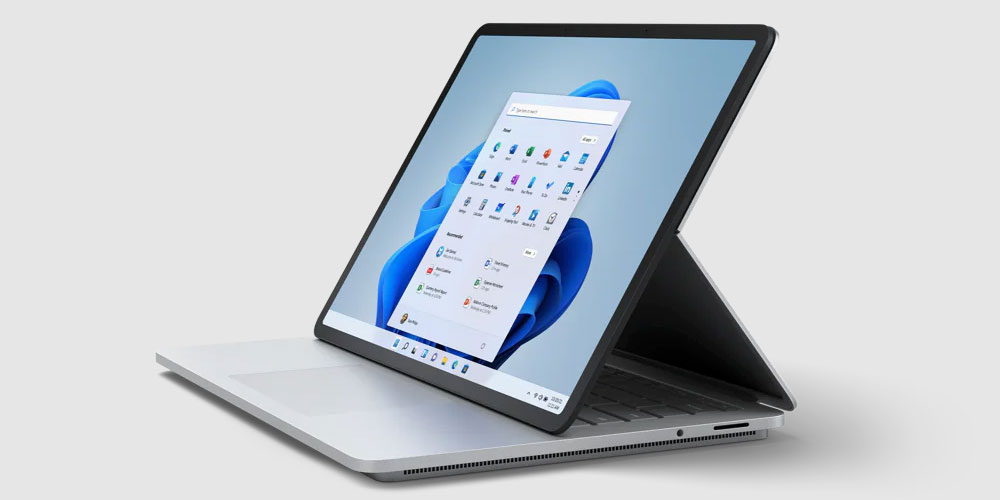
Surface Laptop Studio
For over a decade, the Windows development effort has focused on creators, and this is the first hardware product that genuinely embraces that user group without first trying to create an iPad clone. As a result, this product should better address the needs of those creators while best highlighting the features in Windows 11 that target that audience.
Wrapping Up
Apple has several distinct weaknesses.
The company has a laser-like focus on margins, which generally makes its products significantly more expensive than competing offerings at any given performance level. It doesn’t experiment with new designs, and its once market-leading marketing effort has been significantly defunded, so, at this time, it is incapable of creating another iPod, iPhone, or iPad-like wave.
Apple is no longer focused on creators — but instead on product consistency and cost control — so these customers are increasingly vulnerable. Plus, Apple’s image is being hurt by employee leaks and disclosures surrounding how they are treating software suppliers like Epic Games.
Microsoft’s Surface Laptop Studio best targets this opportunity with a proper high-end alternative to the ugly blend of an iPad and Apple PC. It also showcases a better competitive response to the market because it focuses on creating a solution better targeted at the likely user rather than trying to be a better iPad clone.
The only question is whether Microsoft will step up and build the marketing campaign that will allow this offering to meet its true potential. We don’t know yet, but this is the best execution in hardware that Microsoft has made so far.

Microsoft Surface Duo 2
For much of the last year, the Surface Duo was my favorite smartphone, despite significant initial problems.
The first version of the Surface Duo felt like a product where finance got too much say. The camera was horrid, the performance was far lower than other products in its class, it didn’t support 5G, and the software was often annoying to use. It was so raw.
Also, I’m not a fan of white products, and that was the only color you could get.
Still, I loved using it for reading. I read a lot; in fact, I want to pick up a book and lose myself in it whenever there is downtime. People often came up and commented on my Duo and didn’t even notice my wife’s new iPhone — suggesting there was a broader potential appeal.
The new Surface Duo 2 effectively addresses every shortcoming that plagued my original Duo.
It has the leading Qualcomm Snapdragon 888 technology, four cameras, and things like optical image stabilization AI image correction, which takes the camera from a liability to an asset, and the software is massively improved.
Surface Duo 2 has side notifications, so you don’t have to open it to see what’s going on.

You can turn one of the screens into a gaming controller, making it a better gaming handheld product than virtually any other smartphone.
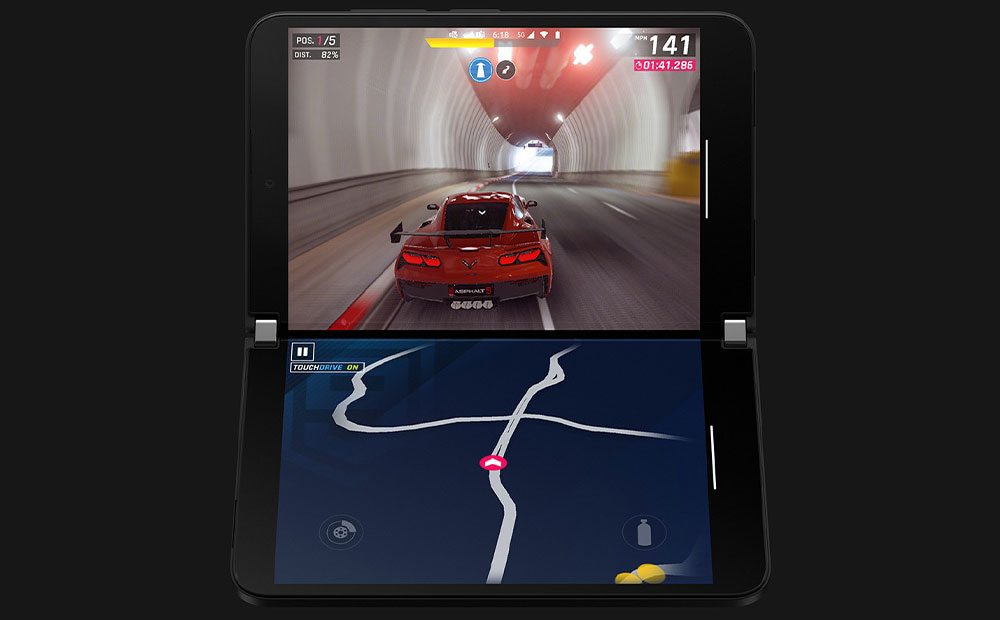
Oh, and it comes in Obsidian Black (and Glacier White if that’s your thing).
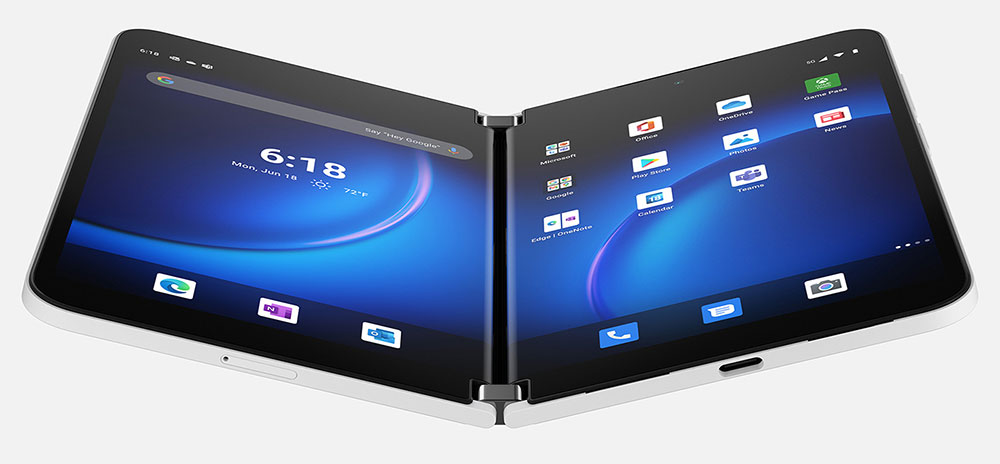 Android-based with a Microsoft overlay, it runs the full suite of Android apps but will work better with apps developed to use the dual screens.
Android-based with a Microsoft overlay, it runs the full suite of Android apps but will work better with apps developed to use the dual screens.
Revolutionary products like the Duo and the iPhone generally take three versions before truly scaling to volume:
- The first version tests the technology and the market and often misses on both.
- The second addresses most of the shortcomings of the initial product.
- The third version benefits from the foundation of the first two addresses any remaining roughness in the offering, and now has many advocates to find an effective demand-generation campaign.
It took three versions for both the iPod and iPhone to truly take off, even though the second versions of both were vastly improved.
The Microsoft Surface Duo has always addressed my personal needs better than any other smartphone design. With this second version, Microsoft eliminated all of the shortcomings I experienced with the first. As a result, the Microsoft Surface Duo 2 is my product of the week.

